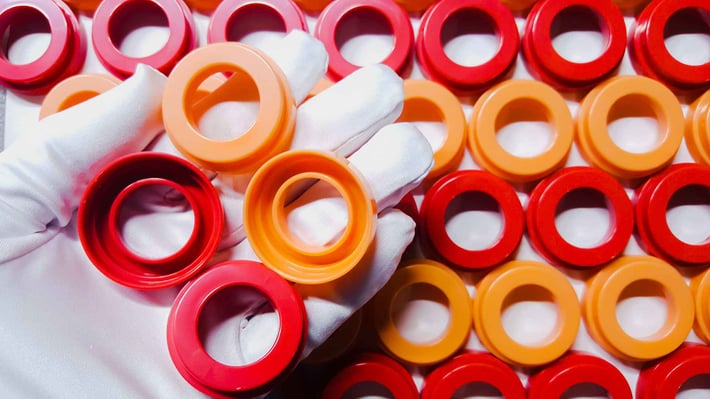
When it comes to designing custom injection molded products, choosing the right material is crucial. Optimum material choice ensures that the final products exhibit the quality and durability that you expect, as well as all of the desired performance aspects. Product costs are also often a major consideration in material choice.
Of course, there are a multitude of different injection molded plastics to choose from, each offering unique strengths and performance advantages. However, choosing the ideal molded plastic material isn’t always an obvious process. There are many complex material properties and production issues to consider.
The Main Design Considerations for Different Injection Molded Plastics:
Material Shrink Rates in Injection Molding
Plastic materials exhibit different shrink rates during the injection molding process. Before manufacturing begins, it’s critical to know what those rates are and how they will impact the way molded parts fit together to create an assembly.
For example, ABS and Polycarbonate shrink in the range of 0.004” – 0.006” per inch. This is much less shrinkage than you get with e.g. nylon and acetal, which generally offer shrink rates between 0.022” – 0.030” per inch.
Consequently, switching from a material such as PC to Acetal will give you a significantly smaller part. In some cases, that may not pose a problem. However, if the smaller part is just one component in a larger, more complex assembly, and the others are still being made from PC, the pieces may not fit together properly. This can also be the case with components that don’t shrink at all such as metal clips, circuit boards, or lenses.
Material-Specific Gates and Vents
Gates and vents within injection molding machines are sized for a specific type of plastic. Changing from one material to another can cause gate blush or flash issues if the gates cannot appropriately accommodate both materials. For example, in molded parts that combine nylon and ABS, surface burns can occur if the gates are designed for nylon materials but are too small for ABS. Generally, injection molded parts exhibit blush if the gates are too small because you have switched between two materials that flow differently.
Specialized Material Additives
The addition of specialized additives like fiberglass are commonly used to increase the strength or stiffness of the finished product, which can substantially affect the manufacturing process. However, fiberglass and similar additives can significantly reduce the shrink rate of a part. Fiberglass is also abrasive on the injection mold tooling, so if the tool is not made of a hardened or wear-resistant material, its service life can be substantially reduced.
Color Matching Different Plastic Materials
When different molded plastic materials are used in the components of an assembly, it’s often extremely challenging to perfectly match colors between the different parts. Even if technically the same color is used in different components, material properties such as surface sheen and luster can make the final colors look slightly different. It’s therefore crucial to fully understand how different injection molded materials will look once the process is complete, and to design the products accordingly.
Achieving an Optimized Material Solution for Your Custom Injection Molding Project
There are many unique types of plastics used in modern injection molding services. The materials science experts at AIM Processing can help you choose the ideal plastic option for your unique products. Established as one of the Denver, Colorado region’s leading molding companies since 1993, we offer all of our customers invaluable industry experience, as well as the superior quality and customer service to back it up.

 SINCE 1993 MADE IN USA
SINCE 1993 MADE IN USA 

